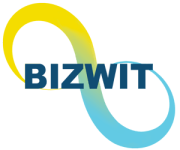Global Orphan Drugs Market is valued approximately USD XX billion in 2022 and is anticipated to grow with a healthy growth rate of more than XX% over the forecast period 2023-2030. Orphan drugs, also known as orphan medicinal products, are pharmaceutical drugs developed to treat rare diseases or conditions. The prevalence of rare diseases among the world’s population has grown recently. Both emerging and industrialized nations have adopted policies to address this issue that encourage the discovery of medications for uncommon diseases and ensure that these medications are readily available. The Orphan Drugs market is expanding because of factors such as rising prevalence of rare diseases and favorable government policies.
According to the Genetic and Rare Diseases (GARD) Information Centre in May 2022, there are around 7,000 rare diseases, and one in ten Americans (nearly 30 million individuals) have one. Furthermore, according to statistics from “GlobalGenes” that was updated in September 2021, more than 400 million people globally are affected by uncommon diseases. Inherent genetic causes for 80% of uncommon disorders have been found. Furthermore, according to the study “Rare diseases: maintaining momentum” published in March 2022, drug companies invested USD 22.9 billion in total in research on rare disorders in 2021, a 28% increase from 2020. As a result, there are more prospects for new orphan medications due to rising prevalence and rising research and development spending on uncommon disease, which is ultimately driving the market growth. In addition, increasing research and development activities in the development of new therapies for rare diseases and strong product launches activities is creating a lucrative opportunity to the market. However, high per patient treatment cost and limited patient pool for clinical trials and product marketing stifles market growth throughout the forecast period of 2023-2030.
The key regions considered for the Global Orphan Drugs Market study includes Asia Pacific, North America, Europe, Latin America, and Middle East & Africa. North America dominated the market in 2022 owing to the dominance of branded products and the region’s increasing disease prevalence. Asia Pacific is expected to grow significantly during the forecast period, owing to factors such as rising target populations, an increase in the number of collaborations for product development, geographic expansion of key players, and active participation of government and nonprofit organizations in the market space.
Major market player included in this report are:
Alexion Pharmaceuticals Inc
Bristol-Myers Squibb Company (Celgene Corporation)
Novartis AG
Pfizer Inc.
F. Hoffmann-La Roche Ltd
Takeda Pharmaceutical Company Limited
Amgen Inc.
Sanofi S.A
Johnson & Johnson Pvt Ltd
AstraZeneca Plc
Recent Developments in the Market:
Ø In June 2022, The Food and medicine Administration (FDA) has designated ALX Oncology Holdings Inc.’s evorpacept, a next-generation CD47 blocker, as an orphan medicine for the treatment of acute myeloid leukaemia (AML).
Ø In March 2021, The Food and Drug Administration has granted orphan drug classification to Intellia Therapeutics’ CRISPR-edited T cell receptor (TCR) T-cell therapy for the treatment of acute myeloid leukaemia (AML).
Global Orphan Drugs Market Report Scope:
ü Historical Data – 2020 – 2021
ü Base Year for Estimation – 2022
ü Forecast period – 2023-2030
ü Report Coverage – Revenue forecast, Company Ranking, Competitive Landscape, Growth factors, and Trends
ü Segments Covered – Drug Type, Top Selling Drugs, Disease Type, Region
ü Regional Scope – North America; Europe; Asia Pacific; Latin America; Middle East & Africa
ü Customization Scope – Free report customization (equivalent up to 8 analyst’s working hours) with purchase. Addition or alteration to country, regional & segment scope*
The objective of the study is to define market sizes of different segments & countries in recent years and to forecast the values to the coming years. The report is designed to incorporate both qualitative and quantitative aspects of the industry within countries involved in the study.
The report also caters detailed information about the crucial aspects such as driving factors & challenges which will define the future growth of the market. Additionally, it also incorporates potential opportunities in micro markets for stakeholders to invest along with the detailed analysis of competitive landscape and Drug Typeofferings of key players. The detailed segments and sub-segment of the market are explained below:
By Drug Type:
Biological
Non-biological
By Top Selling Drugs:
Revlimid
Darzalex
Rituxan
Tafinlar
Ninlaro
Other
By Disease Type:
Oncology
Hematology
Neurology
Cardiovascular
Other Disease Types
By Region:
North America
U.S.
Canada
Europe
UK
Germany
France
Spain
Italy
ROE
Asia Pacific
China
India
Japan
Australia
South Korea
RoAPAC
Latin America
Brazil
Mexico
Middle East & Africa
Saudi Arabia
South Africa
Rest of Middle East & Africa



